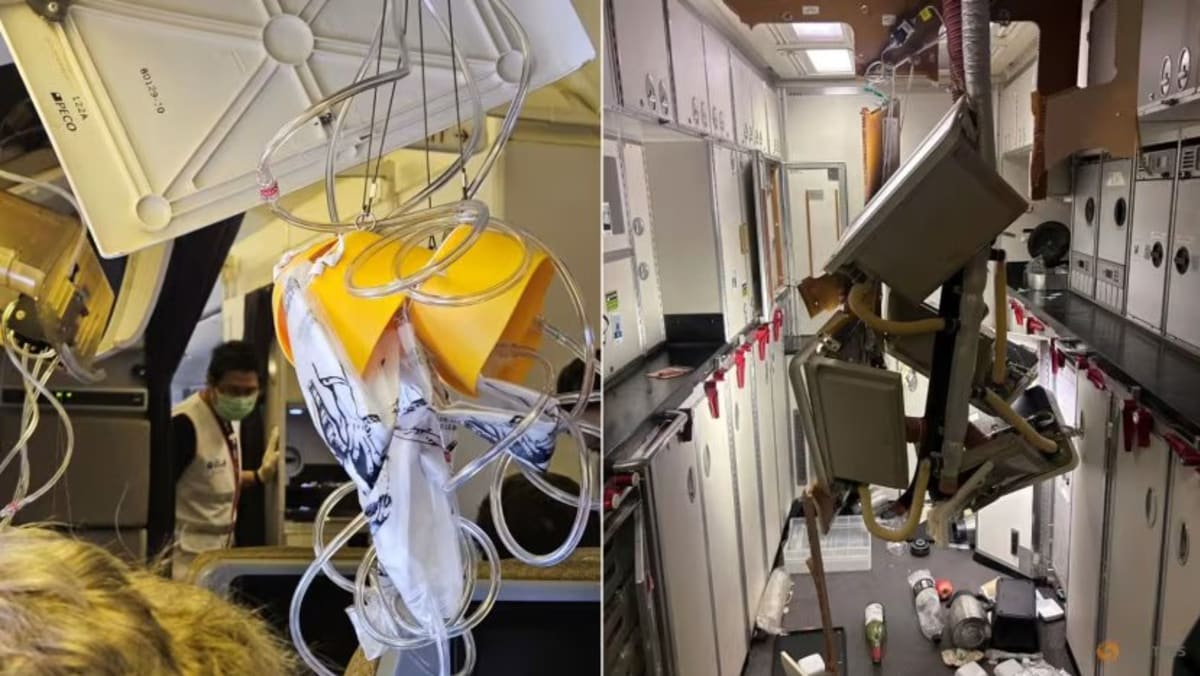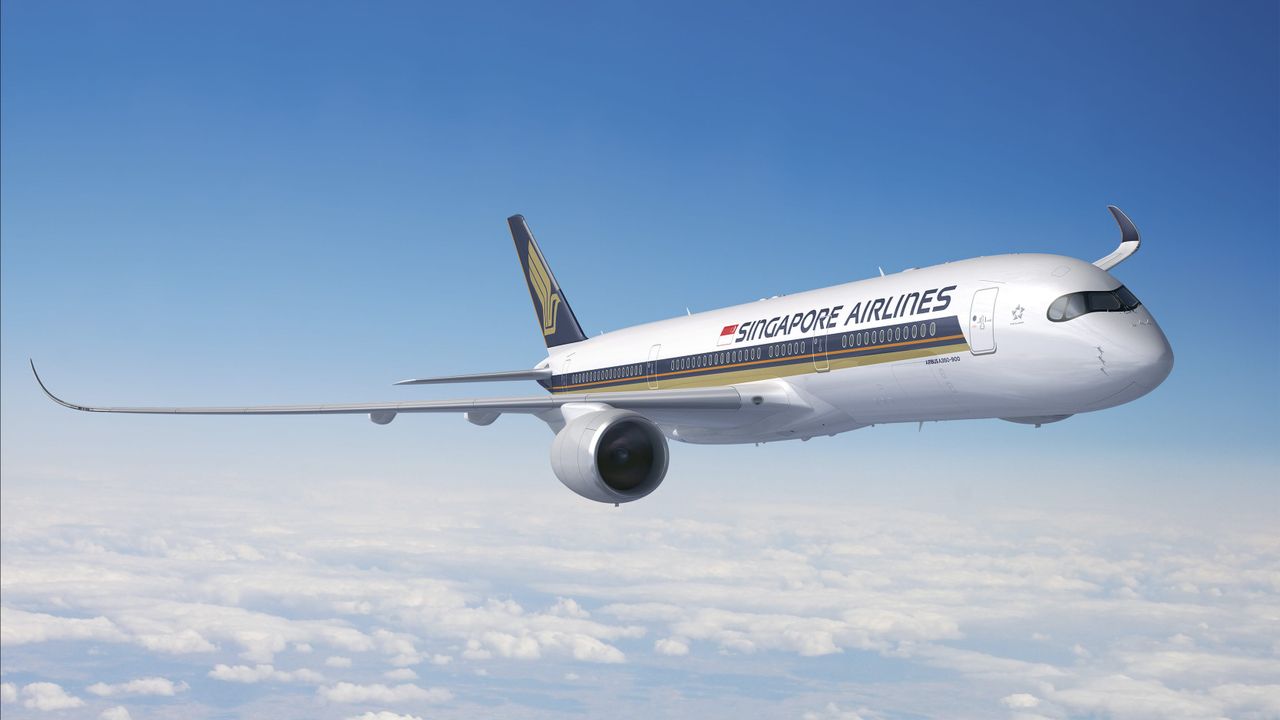Overview of Singapore Airlines Flight Turbulence
Singapore airlines flight turbulence – Singapore Airlines (SIA) has a strong safety record, but it has experienced a number of turbulence incidents over the years. The most notable incident occurred in 2000, when an SIA flight from Singapore to Sydney encountered severe turbulence that injured several passengers and crew members.
While the recent turbulence experienced on a Singapore Airlines flight has raised concerns, it’s worth noting that weather conditions can vary greatly across the globe. Take Greenfield, Iowa , for instance, where the weather can shift from sunny skies to thunderstorms in a matter of hours.
Understanding the weather patterns in different regions can help travelers prepare for potential disruptions and ensure a smoother journey.
Since then, SIA has taken a number of steps to reduce the risk of turbulence-related injuries, including installing new seat belts and improving pilot training. However, turbulence remains a potential hazard for all airlines, and SIA is not immune to the occasional incident.
The turbulence experienced on Singapore Airlines flights can be unsettling, but it’s important to remember that it’s a normal part of flying. To help ease your mind, consider reading about the incredible achievements of the smashing machine mark kerr . His unwavering determination in the face of adversity is a reminder that even in the most challenging of situations, there is always hope.
And as the plane steadies, you’ll find comfort in knowing that the turbulence is behind you, just like the obstacles Mark Kerr overcame.
Frequency and Severity of Turbulence Incidents
Turbulence is a common occurrence on flights, and it can range in severity from mild to severe. Mild turbulence is usually not a cause for concern, but severe turbulence can cause injuries and damage to the aircraft.
SIA has experienced a number of turbulence incidents over the years, but the frequency and severity of these incidents has been relatively low. According to the Aviation Safety Network, SIA has had 10 turbulence-related incidents since 2000, resulting in 24 injuries.
Causes of Turbulence
Turbulence is caused by a number of factors, including wind shear, updrafts, and downdrafts. Wind shear is the difference in wind speed and direction between two layers of air, and it can cause the aircraft to suddenly change altitude or direction.
Updrafts and downdrafts are caused by the heating and cooling of the air. When the air is heated, it rises, and when it is cooled, it sinks. This can cause the aircraft to experience sudden changes in altitude.
The recent turbulence experienced on Singapore Airlines flights has raised concerns about safety. However, it is important to note that turbulence is a common occurrence in aviation, and it is not always a sign of danger. In fact, the Greenfield, Iowa weather has been particularly turbulent lately, which may have contributed to the recent incidents.
Nevertheless, Singapore Airlines has a strong safety record, and it is taking all necessary steps to ensure the safety of its passengers.
Impact of Flight Turbulence on Passengers

Flight turbulence, a common occurrence during air travel, can have a significant impact on passengers. The physical and psychological effects of turbulence can range from mild discomfort to severe injuries.
Physically, turbulence can cause passengers to experience sudden jolts and shifts, leading to nausea, vomiting, and dizziness. In extreme cases, turbulence can cause injuries such as sprains, broken bones, and head injuries. The risk of injury is higher for passengers who are not properly restrained or who are standing or moving around during turbulence.
Measures Taken by Singapore Airlines to Mitigate the Impact of Turbulence
Singapore Airlines takes several measures to mitigate the impact of turbulence on its passengers. These measures include:
- Using advanced weather forecasting systems to identify and avoid areas of turbulence.
- Providing clear instructions to passengers on how to prepare for and respond to turbulence.
- Equipping aircraft with state-of-the-art seatbelts and restraints.
- Training cabin crew to assist passengers during turbulence.
Statistics or Case Studies on Passenger Experiences During Singapore Airlines Flight Turbulence
Singapore Airlines has a strong safety record, and there have been no reported incidents of serious injuries or fatalities due to flight turbulence in recent years. However, there have been a number of cases of passengers experiencing minor injuries or discomfort during turbulence.
The recent turbulence experienced on a Singapore Airlines flight serves as a stark reminder of the unpredictable nature of weather events. While the flight managed to land safely, similar incidents can have devastating consequences, as witnessed in the recent greenfield tornado damage . The tornado’s destructive path left a trail of destruction, highlighting the importance of preparedness and swift response in the face of such extreme weather conditions.
As Singapore Airlines continues to prioritize passenger safety, it is crucial to acknowledge the potential risks associated with air travel and take necessary precautions to ensure a smooth and incident-free journey.
In one case, a passenger on a Singapore Airlines flight from Singapore to London experienced nausea and vomiting during severe turbulence. The cabin crew provided the passenger with assistance and medical attention, and the passenger was able to continue their flight.
The recent Singapore Airlines flight turbulence, which left several passengers injured, was a harrowing experience. However, it pales in comparison to the devastating Iowa tornadoes that have caused widespread destruction and loss of life. The tornadoes, with their relentless winds and hailstones, have left a trail of shattered homes and uprooted trees.
While the Singapore Airlines turbulence was a reminder of the unpredictable nature of air travel, the Iowa tornadoes are a sobering testament to the destructive power of nature.
In another case, a passenger on a Singapore Airlines flight from Hong Kong to San Francisco experienced a sprained ankle during turbulence. The cabin crew provided the passenger with first aid and assisted them in getting to their seat. The passenger was able to continue their flight, but they required medical attention upon arrival in San Francisco.
Singapore Airlines’ Safety Protocols for Turbulence

Singapore Airlines adheres to stringent safety protocols to ensure the well-being of passengers during turbulence. These protocols encompass comprehensive training for pilots, the utilization of advanced technology, and well-defined procedures for handling turbulent conditions.
Training and Certification for Pilots
Singapore Airlines pilots undergo rigorous training to equip them with the skills and knowledge necessary to manage turbulence effectively. They receive comprehensive instruction on:
- Turbulence theory and prediction
- Aircraft performance in turbulent conditions
- Emergency procedures for turbulence-related incidents
Pilots must pass rigorous certification exams and demonstrate proficiency in handling turbulence scenarios through simulator training and real-world experience.
Use of Technology and Equipment
Singapore Airlines employs advanced technology to detect and avoid turbulence. The airline’s aircraft are equipped with:
- Weather radar systems to identify areas of turbulence
- Turbulence detection algorithms that analyze aircraft data to predict turbulence
- Autopilot systems that can adjust the aircraft’s flight path to minimize turbulence
This technology enhances situational awareness and allows pilots to take proactive measures to mitigate the impact of turbulence.
Comparison of Singapore Airlines to Other Airlines: Singapore Airlines Flight Turbulence

Singapore Airlines is widely regarded as one of the safest and most reputable airlines in the world. Its turbulence management practices are no exception, and the airline has a number of strengths that set it apart from other major airlines.
One of the key strengths of Singapore Airlines’ approach to turbulence is its focus on training and preparation. The airline’s pilots undergo extensive training on how to handle turbulence, and they are regularly updated on the latest safety procedures. In addition, Singapore Airlines has a dedicated team of meteorologists who monitor weather conditions and provide real-time updates to pilots.
Another strength of Singapore Airlines’ approach to turbulence is its use of technology. The airline’s aircraft are equipped with the latest turbulence detection and avoidance systems, which help pilots to identify and avoid areas of severe turbulence. In addition, Singapore Airlines has a number of proprietary software programs that help pilots to predict and mitigate the effects of turbulence.
Weaknesses
Despite its many strengths, Singapore Airlines’ approach to turbulence is not without its weaknesses. One of the main weaknesses is the airline’s relatively small fleet size. This means that Singapore Airlines is not always able to avoid areas of severe turbulence, and passengers may occasionally experience rough flights.
Another weakness of Singapore Airlines’ approach to turbulence is its high cost. The airline’s fares are typically higher than those of other major airlines, and this can make it difficult for some passengers to afford to fly with Singapore Airlines.
Conclusion, Singapore airlines flight turbulence
Overall, Singapore Airlines’ approach to turbulence is one of the best in the world. The airline’s focus on training, preparation, and technology helps to ensure that passengers have a safe and comfortable flight. However, Singapore Airlines’ small fleet size and high cost are two weaknesses that passengers should be aware of.
Recommendations for Improving Turbulence Management
Singapore Airlines, renowned for its exceptional safety standards, can further enhance its turbulence management by adopting innovative technologies, implementing comprehensive training programs, and optimizing operational procedures.
Technology Enhancements
- Real-time Turbulence Detection and Prediction: Integrating advanced weather monitoring systems and predictive algorithms can provide accurate and timely turbulence forecasts, enabling pilots to adjust flight paths and minimize passenger discomfort.
- Advanced Cockpit Displays: Equipping aircraft with state-of-the-art cockpit displays that provide clear and intuitive information about turbulence severity, location, and duration can assist pilots in making informed decisions.
- Passenger Alert Systems: Implementing in-flight passenger alert systems that provide timely warnings about upcoming turbulence can prepare passengers for potential disruptions and reduce anxiety.
Training and Education
- Enhanced Pilot Training: Providing pilots with specialized training programs focused on turbulence management, including advanced weather interpretation, aircraft handling techniques, and passenger communication strategies, can improve their ability to respond effectively to turbulence.
- Cabin Crew Training: Equipping cabin crew with comprehensive training on turbulence management protocols, passenger assistance, and emergency procedures can enhance their ability to maintain passenger safety and comfort during turbulent flights.
- Passenger Education: Implementing passenger education programs that provide information about turbulence, its causes, and safety measures can reduce anxiety and increase passenger confidence.
Operational Improvements
- Optimized Flight Planning: Utilizing advanced weather data and predictive algorithms to optimize flight planning can help avoid areas of known or predicted turbulence, reducing passenger exposure to disruptive conditions.
- Enhanced Communication: Establishing clear and effective communication channels between pilots, cabin crew, and passengers during turbulence can ensure timely updates, provide reassurance, and facilitate coordinated responses.
- Post-Turbulence Evaluation: Implementing a systematic process for evaluating turbulence events can identify areas for improvement, inform training programs, and enhance overall safety protocols.
Implementing these recommendations requires a collaborative effort between Singapore Airlines, aircraft manufacturers, technology providers, and regulatory authorities. By embracing innovation, investing in training, and optimizing operational procedures, Singapore Airlines can continue to set the benchmark for turbulence management, ensuring the safety, comfort, and well-being of its passengers.